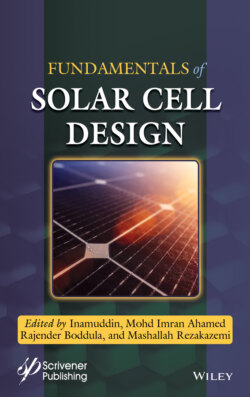Читать книгу Fundamentals of Solar Cell Design - Rajender Boddula - Страница 35
2.3.1 Trapping of Light
ОглавлениеThe metal nanoparticles are normally placed at a particular distance for trapping enough sunlight between nanoparticle and substrate in solar cell. The illuminated light intensity decreases with distance from the substrate in the case of embedded plasmonic nanoparticle. The top deposited plasmonic nanoparticle design is advantageous for illuminated light into the substrate. The more light escapes from device if there is no distance between the substrate and particle. The absorption is enhanced by folding light in absorber using plasmonic nanoparticles. The folding of light is mainly depending on the structural properties of metallic nanoparticles. The absorption is large in small nanoparticles because of increased near-field. However, very smaller metal nanoparticles go through ohmic loss. Hence, the surface plasmons can be utilized to improve the electric and optical behavior of solar cells. SPRs have ability to collect about 95% incident light where as conventional solar cell can collect about 30% of sunlight [41].
